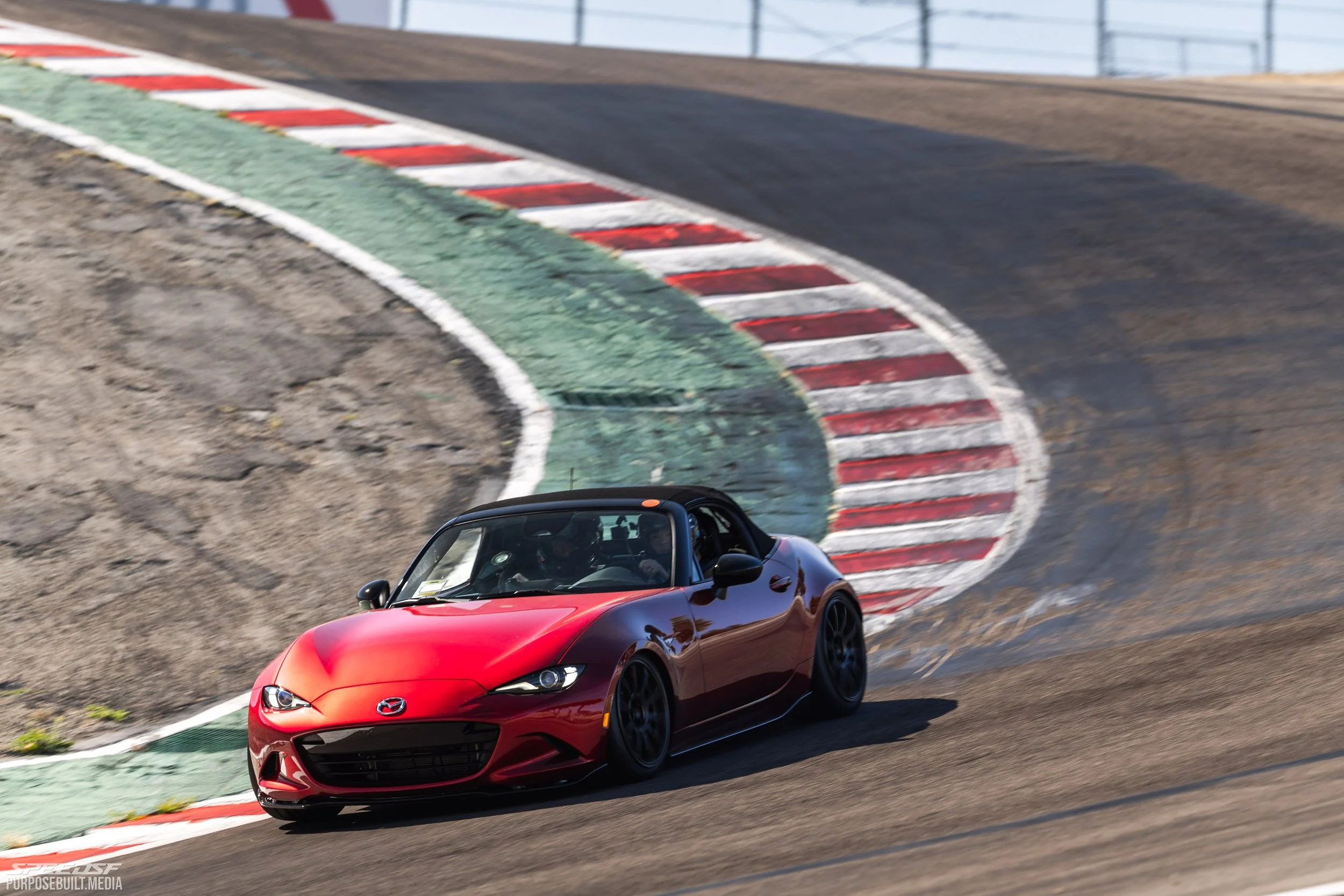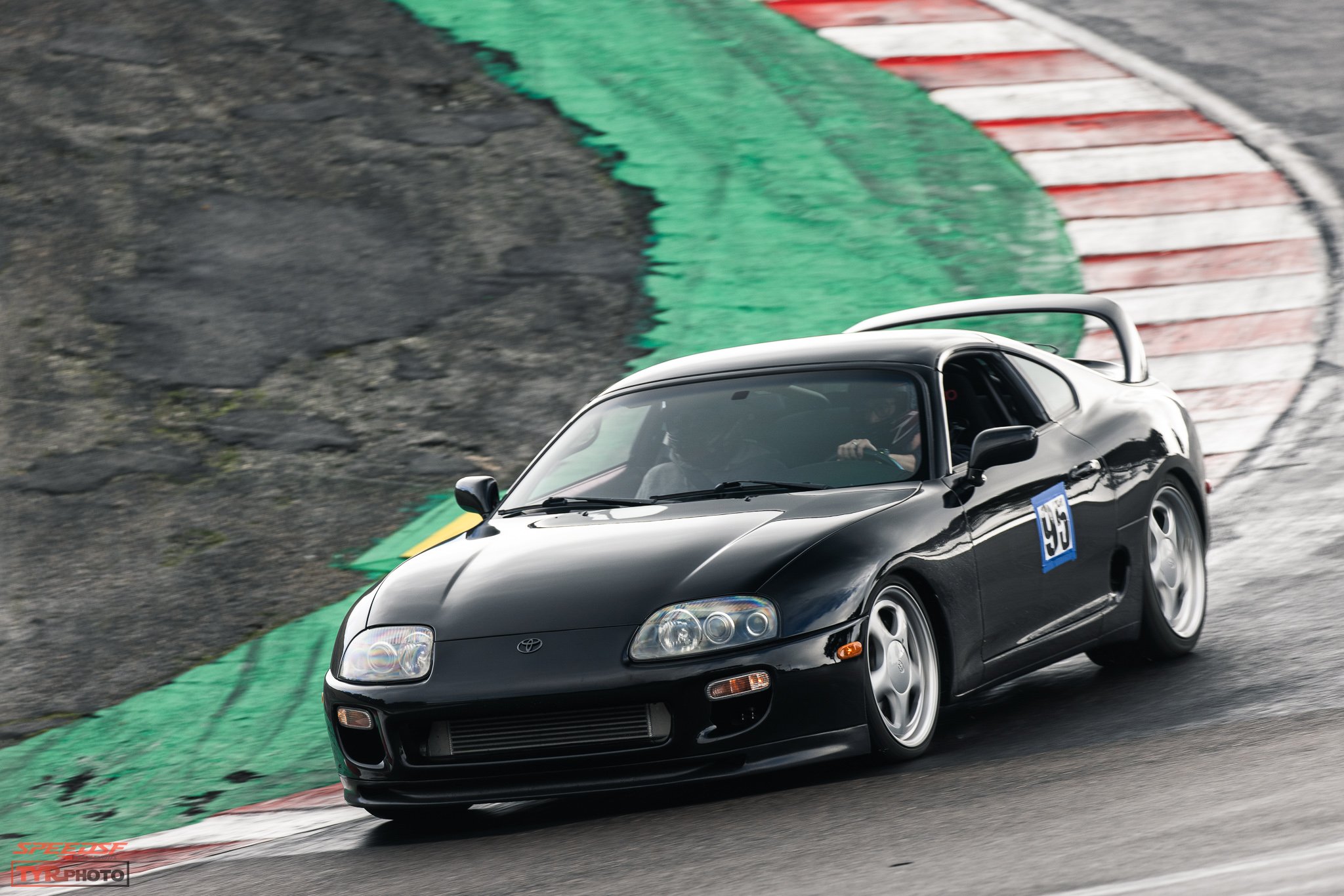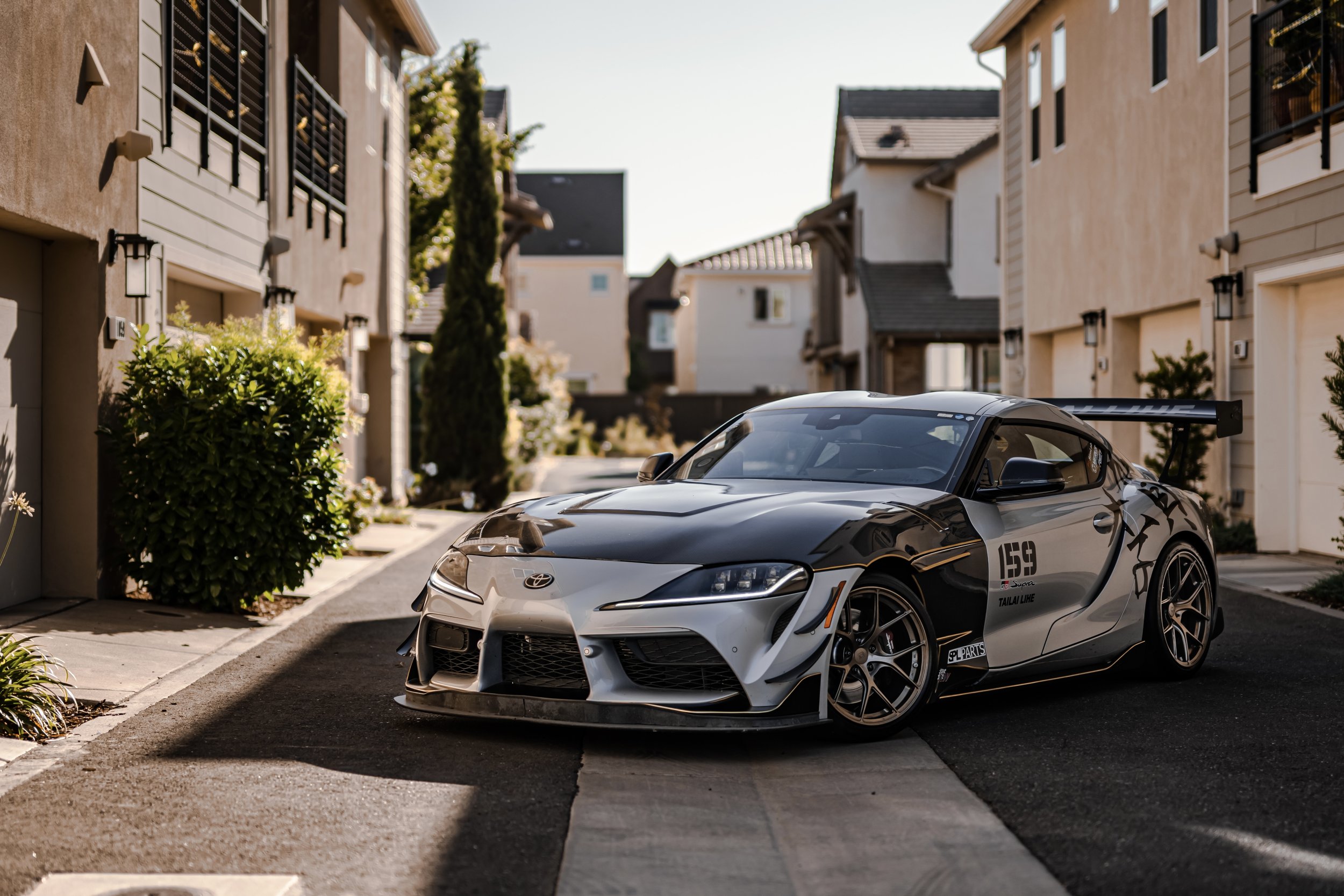
SpeedSF Blog
Every Build Has a Story – Meet the Cars of SpeedSF

Weize’s ND3 Miata: Sim Prep Fortification
After recognizing the financial realities of regular track driving, Weize decided to begin prepping for events with his simulator to ensure he made the most of his weekends.
Thanks to the accessible sim experience, he graduated from GR86 to ND3 - a shift highlighting his growing comfort with rotation - and started clicking off respectable times in no time.

Hao’s Supra: One Fell Swoop
After a year wrestling with a heavyweight M4, Hao Wang decided a Supra would be the smaller, more nimble track car he was after. With an ex-GT500 mechanic guiding him, he overhauled the entire suspension and added top-shelf aero to help this stock power car turn remarkable times with relatively little effort.

CSG Brake Pads: Details Make the Difference
Thanks to a detailed feedback loop between CounterSpace Garage and their wide array of active customers, they've been able to provide a usable, confidence-inspiring brake pad for every popular HPDE platform today.

Hubert's MKIV Supra: Soft Spot
After failing to find an E30 M3 to begin tracking, Hubert decided he’d get his HPDE start in a fourth-generation Supra Turbo: the slinky grand tourer he fell in love with during his teenage street racing days.

Legend's Supra: Big Brain Move
Legend wisely picked a platform he could grow into. Rather than dump big dough on mods, he did the bare minimum with setup and spent his time in the seat, not underneath the car.

Speed SF Challenge Laguna Seca: New Surface, New Records
New pavement and stellar weather meant our fastest drivers pushed harder than ever before at our latest Speed SF Challenge event.

Tailai's Supra: Keep it Simple, Keep it Sane
After blowing up an M3’s engine, Tailai Lihe realized power wasn’t everything. With this car, he kept the B58 stock, and instead prioritized seat time and cornering speeds.

Kevin Schweigert's GR86: Back to Basics
After several unfulfilling years spent chasing big power, Kevin’s realized that the quality he most appreciates in a sports car is its incisiveness and communication. After a return to a simple, agile GR86, he found that thrill that got him obsessed with trackday driving in the first place.

Showdown at Sonoma: Battle Between the Fastest Stateside A90 Supras
Jackie Ding and Will Kwok have both gone quite far in tuning their A90s—further than any others on American soil. With Gary Wong piloting Will’s machine, these two drivers demonstrate where variations in tuning are felt most around Sonoma Raceway.
